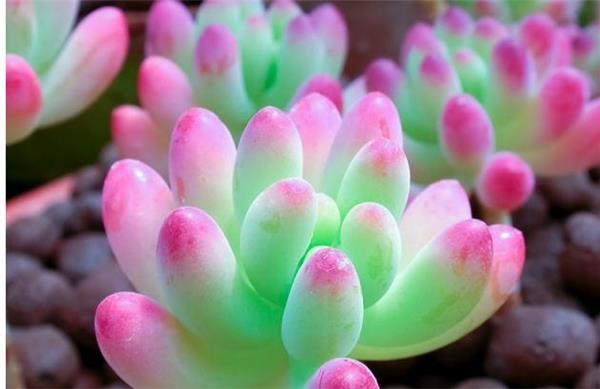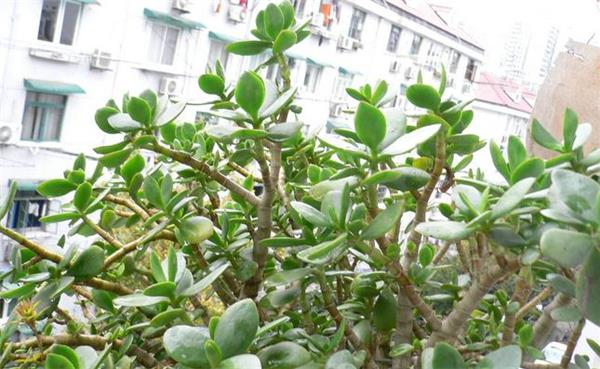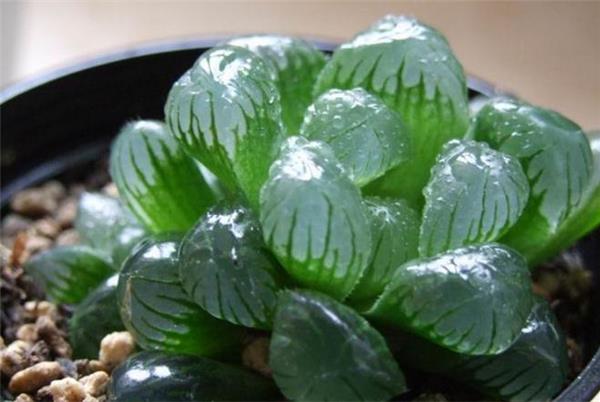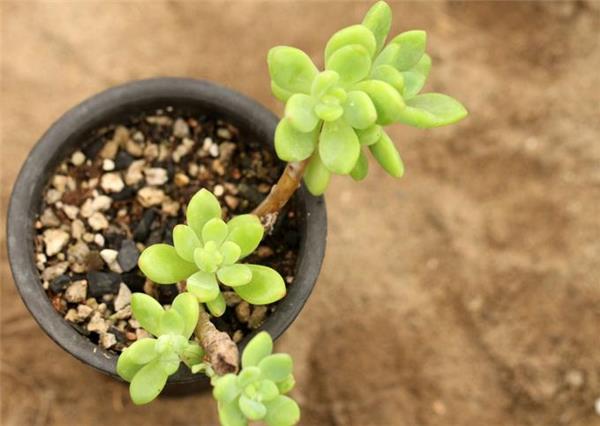What are the common succulents?
Succulent plants are loved by people by virtue of their own characteristics. So, what are the common succulent plants? What are the characteristics of succulent plants? Maybe some of my friends don't know much about this. Today, let's give you a brief introduction. Let's take a look at it.

What are the succulent plants?
1. Jadeite beads
This is also a kind of plant called "Buddha bead", which loves the sun, but tries to keep out the sun at noon, especially in summer, make sure to water once a week, and usually spray some water appropriately, which is conducive to the increase of humidity and the beads look fuller.
2. Jade butterfly
This is a plant that needs to be cultivated in a rice basin, often in spring or autumn, and the basin soil is suitable for sandy soil with good air permeability. It needs more intense sunlight to keep warm in winter.
3. The Jade of Rainbow
This is a plant suitable for growing between 10 degrees Celsius and 28 degrees Celsius. In general, it is appropriate to apply organic fertilizer in about a month. It is best to use liquid fertilizer and pay attention to ventilation. Only by staying in the sun can it grow and become redder and redder.
4. Winter Beauty
This is a very famous succulent plant in the crassulaceae. Compared with the peach beauty, the leaf tip is longer. When in a sunny environment, it is very drought-resistant and the flower stalk is very high, so its posture is also very beautiful. The inverted bell-shaped flowers make it more enchanting.

Characteristics of succulent plants
1. Most succulent plants have leaves.
two。 Although succulent plants have the characteristics of thorns, they do not have the "length" and "sharpness" of cactus. Although the surfaces of many succulent plants have thorns, they are covered by layers of fallen leaves. When the leaves fall, the thorns of succulent plants are somewhat distinct.
3. Most succulent plants are "flower solitary". A whole plant has only one flower, which is less ornamental than the cactus.
4. The water storage part of this succulent plant is mostly in its stem, and this plant is also known as the stem succulent plant.
5. Most of the blocks formed by succulent plants are very large, such as spheres and bottles.
Physiological characteristics of succulent plants
Mucus: many succulent plants have a lot of milk in their bodies, which is white or colorless. This liquid belongs to polysaccharides and contains five carbon sugars. This nutrient can help succulent plants enhance their ability to resist drought, while at the same time allowing wounds on the outer wall of plants to heal quickly.
Transpiration: the morphological structure of succulent plants reduces their transpiration a lot, and the thick stratum corneum is called a pull coat. The diffusion resistance of the cuticular layer of succulent plants is very large, and the loss of water is much less than that of other plant medicines.
Metabolism: succulent plants are different from ordinary plants, which generally absorb co2 during the day, but at night. If the temperature is low, succulent plants can absorb a lot of carbon dioxide.

Cultivation of succulent plants
Succulent plants are generally planted in pots for indoor breeding. Around the world, many people like to breed succulent plants. This kind of plant is very adaptable to the environment, and it is also easy to breed. This kind of plant likes shady places, so it can be seen that it is really a necessary plant for indoor breeding. As long as the drainage performance of the soil is good, the air circulation is fast, and we do not need to water it regularly every day, nor do we need to fertilize it, just deal with the external culture environment for it.

This is the end of the introduction of succulent plants. I believe that after reading it, we will have a certain understanding of succulent plants. If there are friends who want to raise succulent plants, you can refer to the relevant knowledge that I introduce to you.
Related
- Wuhan Hospital Iron Tree Blooming Result Was Instantly Frightened by the Gardener Master
- Which variety of camellia is the most fragrant and best? Which one do you like best?
- What is the small blue coat, the breeding methods and matters needing attention of the succulent plant
- Dormancy time and maintenance management of succulent plants during dormancy
- Minas succulent how to raise, Minas succulent plant pictures
- What are the varieties of winter succulent plants
- How to raise succulent plants in twelve rolls? let's take a look at some experience of breeding twelve rolls.
- Attention should be paid to water control for succulent plants during dormant period (winter and summer)
- Watering experience of twelve rolls of succulent plants
- Techniques for fertilizing succulent plants. An article will let you know how to fertilize succulent plants.



